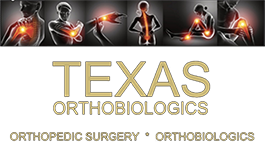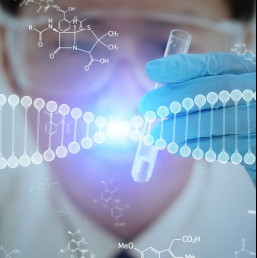If you haven't heard the term orthobiologics before, the name pretty much says it all - especially if you break it down into its two component words, ortho and biologics.
Ortho comes from the Greek word orthos, and means straight or erect, in this context referring to bones, tendons, muscles, and joints. Biologics refers to substances derived naturally from the body. When these two words are combined into a single word, it takes on the meaning of biological substances that occur naturally in the body, and which can be used effectively to heal various body parts.
Sources for orthobiologics
There are only two primary sources for orthobiologics - your own or someone else's. When the substances come from your own body, they are referred to as autologous.
One example of autologous orthobiologics is Platelet Rich Plasma (PRP), which is drawn from one of your own veins, processed, then injected back into your body. When orthobiologics are derived from someone else's body, they are called allogenic. It's an important distinction to bear in mind, whether these biological substances come from your own body or from another person's.
Tissue types of orthobiologics
There are four different types of tissues that constitute orthobiologics, and they are comprised of the following:
- Blood-derived - a good example of blood-derived orthobiologics is PRP. When blood is extracted from the body, the white and red blood cells are removed and the platelets are concentrated, because they are very rich in growth factors. This concentrated platelet blood is then re-injected.
- Extra-cellular matrix - these matrices provide a great deal of cell support by filling gaps created by torn tissue and promoting healing.
- Conditioned media - the best example of conditioned media are exosomes, which have tremendous healing and regenerative properties.
- Stem cells - bone marrow and fat are the best sources of stem cells, and these are used to replace damaged or diseased cells in the body.
Practical application of orthobiologics
So how can these bodily substances be used to promote healing in the body?
For example, when a person has an ACL tear, orthobiologics can be used to help restore and regenerate the torn ligament. This approach can often be more efficient and safe than conventional surgery to replace an ACL. Another example is a torn rotator cuff of the shoulder – these patients generally benefit from an injection of PRP to help heal the damage in the shoulder tissue. Because PRP is so rich in growth factors, it promotes better blood circulation, as well as a reduction of inflammation.
Orthobiologics is steadily becoming more advanced and sophisticated, and many experts agree there will come a time when it is used in favor of more invasive orthopedic surgeries.
In fact, because orthobiologics can heal body tissue without all the downtime, risks, and potential complications of full-blown surgery, it may very well become more popular and more prevalent than many kinds of orthopedic surgery.








Post a comment
Your email address will not be published. Fields marked (*) are mandatory.